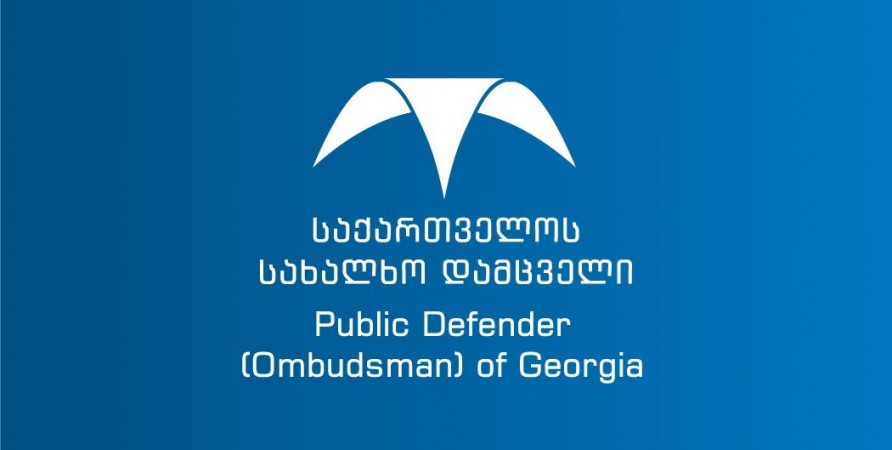Statement of the Public Defender of Georgia Relating to the Process of Selection of Supreme Court Judges
As the public is aware, the Public Defender is overseeing the process of selection of Supreme Court judges within her constitutional mandate. The OSCE Office for Democratic Institutions and Human Rights (ODIHR) is also monitoring the process independently at the invitation of the Public Defender. It is important for the Public Defender to make sure that candidates with the best qualifications and reputation are selected as judges of the Supreme Court on the basis of a fair and transparent process. The Public Defender emphasizes that the process of appointment/election of judges in accordance with international standards, including the European Convention on Human Rights1 and the European Court of Human Rights2, is an integral part of the right to a fair trial. The mentioned process, as a human rights issue, falls under the oversight function of the Public Defender.3 It should also be noted that Article 25 of the Constitution of Georgia guarantees the right of every citizen of Georgia to hold a public office, including the position of a judge in the Supreme Court, if they meet the requirements of the law, while under Article 18 of the Constitution of Georgia, everyone has the right to a fair hearing of a case by an administrative body. Accordingly, protection of these rights is also subject to the supervision of the Public Defender.
Certain individuals were dissatisfied with the Public Defender's statement of June 28, in which we summarized the first secret ballot of Supreme Court candidates held in the High Council of Justice. The statement highlighted the high degree of coincidence among 10 ballots and indicated that no similar coincidence was found in the remaining 3 ballots. In order to prevent that the public is misled and any question is left about the impartial and objective supervision carried out by the Public Defender, we would like to provide additional information relating to the mentioned issue.
First of all, we would like to emphasize that it was the Public Defender who published the results of the secret ballot according to the ballot papers and that this data has not been made public by the High Council of Justice. The above data allowed everyone to see what types of coincidences were found in the ballots and to make objective conclusions. The Public Defender’s findings included a very high degree of coincidence among 10 ballots, which was not identified in the remaining 3 ballots. Specifically, the following was found in the 10 ballots:
- One and the same 20 candidates were circled in 4 ballots;
- One and the same other 20 candidates were circled in 3 ballots;
- One and the same 20 candidates were circled in 2 ballots;4
- In one of the ballots, 15 candidates fully coincided with the candidates circled in the above-mentioned 4 ballots, while 5 candidates fully coincided with the candidates circled in the above-mentioned 2 ballots.
We would like to emphasize that a total of 45 candidates were circled in the mentioned 10 ballots and each of them qualified for a list of 50 candidates. None of the candidates circled in the mentioned 10 ballots failed to qualify for the next round of selection.
As for the remaining 3 ballots, the Public Defender's statement of June 28 clearly indicated that no coincidence of the above-mentioned degree could be found in them. The Public Defender also noted that the 5 candidates circled in the mentioned 3 ballots, who did not receive any vote in the remaining 10 ballots, qualified for the next level. We would like to explain that the degree of coincidence in the 3 ballots was not as high as in the 10 ballots, namely:
- 6 out of 20 candidates coincided between the first and second ballots;
- 11 out of 20 candidates coincided between the first and third ballots;
- 10 out of 20 candidates coincided between the second and third ballots.
A total of 30 candidates were circled in the three ballots, 18 of which qualified for the next stage, while 12 failed. Out of them, 6 candidates fully coincided within all 3 ballots.
The table published by the Public Defender also shows the coincidences between any of these 3 ballots and the above-mentioned 10 ballots.
The above data clearly shows the difference between the degrees of coincidence observed in the 10 ballots on the one hand and the 3 ballots on the other hand. An objective observer would not find it difficult to make conclusions on the basis of this data. Portraying these coincidences as equal and describing the Public Defender’s key findings as a selective approach could be an unsuccessful attempt to justify the problems in the High Council of Justice or to divert attention from these problems.
The Public Defender will observe the process of selection of Supreme Court judges and will present the final results of monitoring to the public.
1Paragraph 1 of Article 6 of the European Convention on Human Rights.
2 For an example, see the judgment of the European Court of Human Rights of 12 March 2019 in the case of Gudmundur Andri Astradsson v. Iceland (Application no. 26374/18).
3Paragraph 1 of Article 35 of the Constitution of Georgia; Articles 12 and 14 of the Organic Law of Georgia on the Public Defender of Georgia; The Venice Commission Principles on the Protection and Promotion of the Ombudsman Institutions, 3 May 2019, Principle 13.
415 out of these candidates were circled in the above-mentioned 3 ballots as well.















